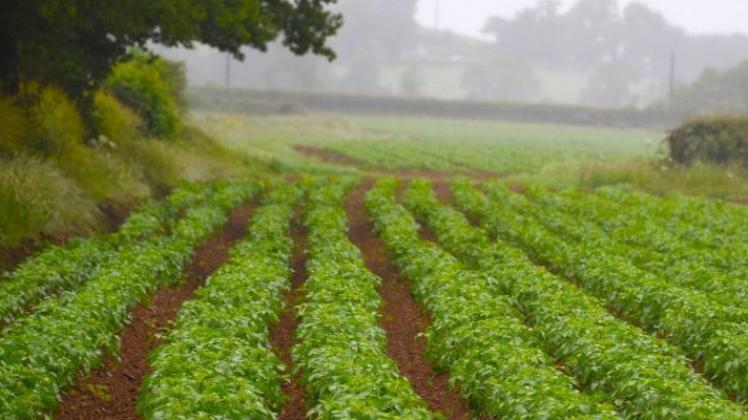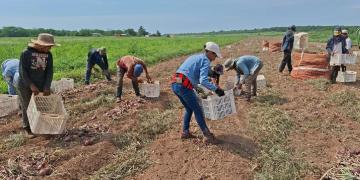Canadá: Heat and drought across Canada’s potato planting Ontario province
As heat and drought continue across the province, irrigation has been the order of the day, according to a message sent by Dr Eugenia Banks, potato specialist in this province of Canada.

Dr Banks says many fields are in the tuber setting stage, a stage that requires adequate soil moisture for an optimum tuber set. Fields with closed rows and vigorous canopies keep the soil cool, which reduces stress. Potatoes suffer when soils get hot in direct sun.
Many fields still have open canopies, according to Dr Banks, the result of late planting. Unfortunately, a nice, steady rain is not in the forecast for this coming week, she says.
Crop problems that were detected this week include the following, according to Dr Banks:
● Long stolons with shoots at the tips instead of tubers. Varieties with low tolerance to heat, like the old processing variety ‘Snowden’, react this way when day temperatures are above 30C and at night temperatures are above 22C.
● Fusarium wilt. Fusarium is a soilborne fungus that enters potato plants through the roots and restricts water flow to the plant. The disease can be confused with Verticillium wilt, but Fusarium wilt usually spreads through the stem while Verticillium wilt is restricted to the vascular system and does not cause much rotting of the stem. Fusarium wilt is difficult to manage because it can persist in the soil for many years. It also causes stem-end browning and internal browning of tubers, which reduces market quality.
● Low incidence of leaf burning caused by high temperature combined with high humidity.
● “Fiddlehead” stems. This distortion is due herbicide drift, 2,4-D or other auxin herbicides. Such injury may result in tuber malformations.
Good control of early blight is noticeable, according to Dr Banks. As expected, late blight spores were not detected this week.
Source: Dr Eugenia Banks
Fuente: https://potatonewstoday.com/2019/07/12/heat-and-drought-across-canadas-potato-planting-ontario-province/




